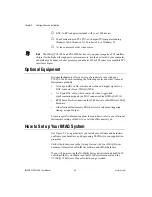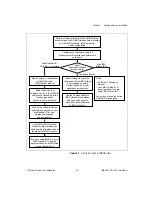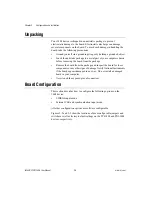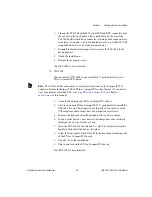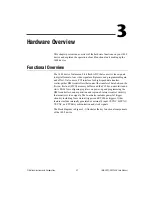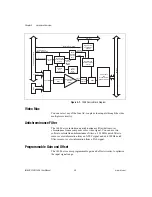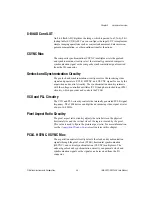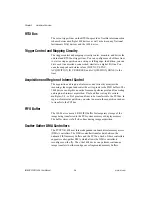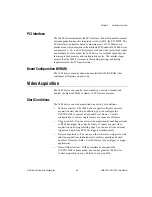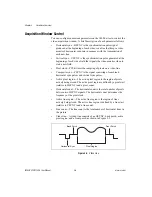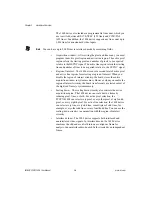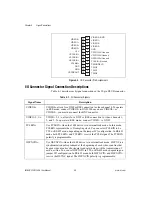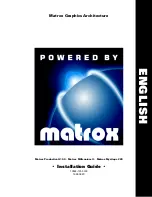
Chapter 3
Hardware Overview
©
National Instruments Corporation
3-5
PCI Interface
The 1408 device implements the PCI interface with a National Instruments
custom application-specific integrated circuit (ASIC), the PCI MITE. The
PCI interface can transfer data at a maximum rate of 132 Mbytes/s in
master mode, which maximizes the available PCI bandwidth. 1408 devices
can generate 8-, 16-, and 32-bit memory read and write cycles, both single
and multiple. In slave mode, the 1408 device is a medium speed decoder
that accepts both memory and configuration cycles. The interface logic
ensures that the 1408 device meets the loading, driving, and timing
requirements of the PCI specification.
Board Configuration NVRAM
The 1408 device contains onboard nonvolatile RAM (NVRAM) that
configures all registers on power-up.
Video Acquisition
The 1408 device can acquire video signals in a variety of modes and
transfer the digitized fields or frames to PCI system memory.
Start Conditions
The 1408 device can start acquisition on a variety of conditions:
•
Software control—The 1408 device supports software control of
acquisition start and stop. In addition, you can configure the
PCI/PXI-1408 to capture a fixed number of frames. Use this
configuration to capture single frames or a sequence of frames.
•
Trigger control—You can also start an acquisition by enabling external
or RTSI bus trigger lines. Each of these 11 inputs can start video
acquisition on a rising or falling edge. You can use all four external
triggers and up to four RTSI bus triggers simultaneously.
•
Delayed acquisition—You can use either software or triggers to start
and stop acquisitions instantaneously or after capturing a desired
number of frames or fields. Use this feature for posttrigger or trigger
applications.
•
Frame/field selection—With an interlaced camera and the
PCI/PXI-1408 in frame mode, you can program the 1408 device
to start acquisition on any odd field or any even field.



